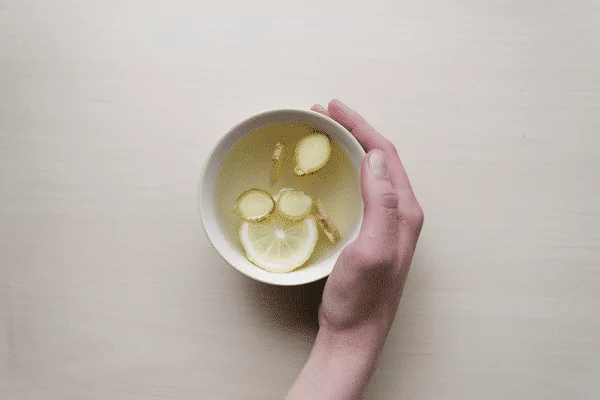It's hard to really summarize the effect that Donna Gates, M.Ed., ABAAHP, has had on the world of health and nutrition. Her international best-selling book The Body Ecology Diet introduced a diet that was the first of its kind—sugar-free, gluten-free, casein-free, and probiotic rich. In 1994, Donna introduced the natural sweetener stevia to the U.S., began teaching about fermented foods, and coined the phrase “inner ecosystem” to describe the network of microbes that maintains our basic physiological processes—from digestion to immunity.
Recently, she created a series of three videos with tips for how to start detoxifying your body and preventing illness. You can find that here:
Click Here to See These Videos From Donna Gate
Her work has had a big impact on us and probably a lot of you as well. So we're super excited to be able to share something that she wrote about a topic that you don't see very often: your tongue as an indication of your gut health.
We've talked a lot about gut health on our blog, because when yours isn't functioning properly, it means that you're not getting proper nourishment and everything else can suffer (including your skin).
But how can you tell how healthy your gut is? Your tongue can help...

The Connection Between Your Tongue and Digestive Health
How well we digest food and drink shows up on the tongue. This is visible in the tongue coating and in the tongue color.
Tongue Coating
The tongue coat, which often shows up on the middle or at the back of the tongue, lets you know how well you are metabolizing the food you eat:
- A light, thin, white tongue coat reflects healthy digestive function.
- A thick tongue coat reflects an excess of dampness, or pathogenic fluid. The tongue coat may be thick and yellow or thick and white. Most commonly, a thick tongue coat is associated with poor gut function.
- No tongue coat at all could mean some form of exhaustion in the body. For example, a red and shiny wet tongue could signal that the body does not have enough fluids to produce a coat. A natural balance of fluids in the body is essential for healthy gut function and overall vitality.
Tongue Color
Tongue color can range from pale pink to red or even have a bluish tinge.
The tongue color reflects the distribution of body fluids throughout the body. For example:
- A pale tongue tells us that there may not be enough blood in the body. Often the root cause of a pale tongue can be found in diet. This is because food gives us the energy to make blood.
- A tongue that is purple or has a bluish tinge could be a warning that fluids and blood are not fully circulating. Lack of circulation can also translate into emotional stagnation or depression.
If you would rather not talk about your feelings, an acupuncturist will still be able to learn a lot from looking at your tongue! This is because the tongue gives clues about your current mental and emotional state.
Tongue Tip
When it comes to emotions, the tip of the tongue is especially important:
- A red tongue tip shows up when the tongue tip is redder than the rest of the tongue body. This can reflect some kind of psychological stress. According to Chinese medicine, too much thinking or worrying can deplete the cooling, regenerative fluids of the body and generate heat. Heat, as you may have already guessed, shows up as a red color in the tongue. When we see a red tongue or a red tip, it makes sense to avoid foods that can overheat the body. These are foods like wine, alcohol, coffee, spicy foods, and too much meat.
- No tip or indentation at the tip of the tongue. When someone experiences severe trauma, this may show up as an indentation on the tip of the tongue. Emotionally, this person may be slightly introverted or feel an overall loss of strength.
The Danger of a Thick Tongue Coat
If you see a thick tongue coat, it is time to make some changes!
A thick tongue coat in the center of the tongue body or toward the back of the tongue indicates an overburdened digestive system. An overgrowth of bacteria or yeast in the digestive system will often show up as a thick tongue coat. The color of the coat may be white or yellow, depending on a person’s constitution.
Too much dampness can contribute to a thick tongue coat as well. When we overburden our digestive system by eating to capacity, we slow down gut motility. While a little digestive disharmony may not seem like anything to worry about, over time it can lead to other problems that involve the immune system and the hormonal system.
6 Ways to Remedy a Thick Tongue Coat
If you are suffering from a thick tongue coating, try the following:
Fermented Foods
Fermented foods and probiotic beverages are some of the most effective ways to bring your inner ecosystem back into balance. A healthy tongue should look fresh and have a very thin, white coat. Introducing living enzymes and probiotics to assist in the digestion of your food and to repopulate the digestive tract with beneficial bacteria is a must when correcting digestion and fighting Candida.
The Principle of 80/20
A simple solution to improve digestion is to follow the Body Ecology Principle of 80/20. This means eating until you are 80% full. It also means not overwhelming your plate (and your gut) with too many starchy or acidic foods. Make sure that 80% of your plate is made up of non-starchy vegetables, fermented vegetables, and ocean vegetables.
Warm It Up
Soups, broths, steamed vegetables, and cooked foods are often better choices for someone with digestive issues. Avoid large amounts of raw fruits and vegetables.
Spice It Up
Herbs and spices such as turmeric, cardamom, ginger, coriander, black pepper, and fennel all aid in warming the system and improving digestion.
Warm Ginger Tea
A cup of warm tea 20 minutes before a meal is a great way to stoke the digestive fire. Ginger tea can also benefit indigestion, bloating, and nausea.
Enzymes
Enzymes can assist the digestive process by improving the body’s ability to break down the foods initially in the stomach and later in the small intestine to increase mineral absorption.
What To Remember Most About This Article
Every person's tongue is unique with distinct characteristics that are a reflection of their inner health. According to ancient Chinese medicine, the appearance of the tongue can reflect the health of the entire body. Additionally, the look and texture of the tongue can be a good indicator of the health of the digestive system, based on the coating and color of the tongue.
If you have Candida, you will have a thick tongue coat that points to an overburdened digestive system.
You can use these helpful tips to improve your digestion and the appearance of your tongue:
- Eat fermented foods and drink probiotic beverages to bring your inner ecosystem back into balance.
- Use the Principle of 80/20 at every meal.
- Warm up your digestion with cooked foods.
- Add herbs and spices to improve digestion.
- Drink warm ginger tea 20 minutes before a meal to benefit digestion and relieve nausea.
- Take digestive enzymes to increase mineral absorption.

Want to hear more tips from Donna Gates on how to take control of your health and feel more beautiful? Check out her video series:
Click Here to Get Exclusive Video Content from Donna Gates
What Your Tongue Reveals About Your Digestion (And How to Remedy It) is available on http://www.annmariegianni.com
No comments:
Post a Comment